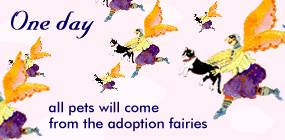http://www.azcentral.com/php-bin/pop...P426E0811AB305
Mexican breed of hairless dogs stages a comeback
Chris Hawley
Republic Mexico City Bureau
Apr. 26, 2005 12:00 AM
MEXICO CITY - From a distance they look like half-inflated inner tubes, 10 rubbery black animals scattered across the grass outside the Dolores Olmedo Patiño Art Museum.
Up close, they don't look much better, with squinty eyes, ears like a bat's, half-formed teeth, a rat's tail and bodies as hairless as salamanders, except for one sporting a black Mohawk and beard.
"Those are some ugly dogs," declared sixth-grader Joaquin RamÃrez, staring at the creatures from the other side of a hedge. "Really ugly."
Maybe so, but the hairless Mexican dogs known as Xoloitzcuintles are quietly gaining fans worldwide. Their numbers have grown from several hundred to as many as 7,000 in the past 20 years, and there are now Xoloitzcuintle clubs as far away as Sweden and France.
"They were on the way to dying out, but not anymore," said MarÃa Eugenia de Lara, a museum spokeswoman.
The museum uses the dogs as ornaments for its grounds, and over the years they've become an attraction in themselves.
In the United States, the hairless canines quickly become local celebrities, said Rosemary Kennedy of Tucson.
"There is no going out in public with these dogs without people asking questions," she said.
"If people are driving down the street, the typical reaction is for them to slam on the brakes, almost cause an accident, turn around and follow you and say, 'What on Earth kind of dog is that?' "
Kennedy is secretary of the Xoloitzcuintle Club USA, which was founded in 2000 and is the second of two fan clubs in the United States. The group hosted a "Hairless Dog Party" on Saturday in Tucson.
A dog's decline
The breed's name is pronounced SHOW-LOW-EATS-QUEENT-LAY, an Aztec word that means "dog of Xolotl," the god of the underworld. The Aztecs believed they helped guide human souls to the afterlife.
The dogs are native to Mexico's western coast, where their hairlessness helped them deal with tropical insects and heat. The same gene gives them small teeth and a propensity for missing molars.
Most Xoloitzcuintles are slate gray and smooth as beach balls, with the occasional tuft of hair on their heads. They are good with families and other dogs but distrustful of outsiders.
They're one of the few dog types that weren't created by human breeders, said Oswaldo Ãlfaro, spokesman for the Mexican Dog Lovers Federation.
Xoloitzcuintles were one of the first breeds recognized by the American Kennel Club, in 1887. But in the 1930s and '40s, many Mexican dog lovers abandoned them for more popular European breeds.
The hairless dogs became a curiosity kept by Mexican intellectuals, including the painters Diego Rivera and Frida Kahlo and their patron, Dolores Olmedo Patiño.
"Those people were attracted to them partly because of their own nationalism and their interest in things that were purely Mexican," Ãlfaro said.
In Rivera's mural The Landing of Cortés at Veracruz, the painter shows a Xoloitzcuintle snarling at a European dog brought to Mexico by Spanish conqueror Hernán Cortés.
By the 1970s, there were probably only 500 Xoloitzcuintles in Mexico, Ãlfaro said. As their numbers dwindled, the American Kennel Club dropped them from its list of official breeds in 1959.
The comeback
It wasn't until the 1980s that breeders started to adopt Xoloitzcuintles again, Ãlfaro said. They were inspired by the international success of another Mexican dog, the Chihuahua.
Breeders now have developed three sizes - small, standard and medium - and ship them all over the world. Mexican academics also have published papers and books examining the dogs' evolution and the strange, dominant gene that causes their hairlessness.
Today, a pedigreed Xoloitzcuintle from Mexico sells for $700 to $1,400, Ãlfaro said. Dogs without pedigrees are $300 to $500.
There are about 3,000 Xoloitzcuintles registered with the Mexican Dog Lovers Federation and probably another 3,000 unregistered, he said.
The Xoloitzcuintle Club of America, the older of the two U.S. organizations, estimates there are 2,000 dogs in the United States. The American Kennel Club has 17 Xoloitzcuintles registered with its Foundation Stock Service, a kind of minor league for breeders.
Wherever they go, the Mexican dogs turn heads, their owners say.
"Once I was going to a show in Ohio, and I stopped at a rest stop," said Amy Fernández, president of the Xoloitzcuintle Club of America. "I ended up practically giving a seminar on the dogs to a whole group of Hells Angels."
At the Dolores Olmedo Patiño museum, Education Director Josefina GarcÃa Hernández chuckled as the sixth-graders gaped at Chac, a Mohawk-wearing puppy. The dog hammed it up for the crowd, wagging his rat tail and rolling over to show off his hairless hide.
"At first I didn't find these dogs pretty," GarcÃa Hernández said. "But the more you get to know them, the more you like them. They've got a great personality."








 Reply With Quote
Reply With Quote
Bookmarks